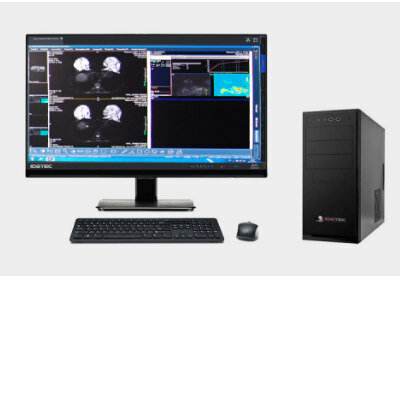MRI Used to Aid Malaria Research in Malawi
By MedImaging staff writers
Posted on 30 Jun 2008
Researchers are utilizing magnetic resonance imaging (MRI) technology to get a closer look at cerebral malaria in Malawi.Posted on 30 Jun 2008
Michigan State University (MSU; East Lansing, MI, USA) physician Dr. Terrie Taylor is evaluating cerebral malaria in Malawi where the vast majority of malarial patients are children. To get a closer look at the damage malaria does to a child, Dr. Taylor and colleagues examine the child's brain, something that, up until now, could only be done in an autopsy.
However, that will change the summer of 2008 when a new MRI unit--the first MRI machine ever in Malawi--will be put into operation. This will not only let physicians assess malaria damage before a child has died, but will help to diagnose a wide range of illnesses that affect the local population. "This will help in so many ways,” Dr. Taylor said. "We will use it for the research we do, we'll be able to use it for everyday patients that come through the hospital, and it will help to attract and retain more doctors to Malawi.”
The MRI unit arrived in Malawi in April 2008. It will be housed at the Queen Elizabeth Central Hospital in Blantyre, Malawi's largest city. The minister of health officially dedicated it on June 23, 2008, at a ceremony involving a number of MSU dignitaries. "We are honored that the honorable Kkhumbo Kachali, Ministry of Health, will be able to join us on this historic occasion,” said Dr. William Strampel, dean of the MSU College of Osteopathic Medicine, which donated more than US$400,000 for the project.
Currently there is only one radiologist who serves the entire nation of Malawi. Another benefit of the new MRI unit is that it will allow that radiologist--Sam Kampondeni--to send images to MSU, where radiologists will be able to assess and evaluate them and offer a second opinion. "With this new MRI unit we will be able to serve as many as 18 patients per day,” said Mr. Kampondeni, who trained as a guest in the MSU department of radiology in 2007.
Not only will the MRI unit be the first in Malawi, it will also serve the neighboring countries of Mozambique and Zambia, neither of which has an MRI. Dr. Taylor, a professor of internal medicine and an osteopathic physician, spends the rainy season--January through June--working at the Queen Elizabeth Central Hospital, treating malaria patients and conducting research on a disease that kills as many as two million children in sub-Saharan Africa every year.
So far, one of the most noteworthy results is the discovery that a quarter of the children thought to have cerebral malaria turned out, on autopsy, to have died of infections, diseases, or conditions unrelated to malaria. "This calls into question a lot of the work that's been done on severe malaria to date,” Dr. Taylor remarked. "The studies might have included patients who were not suffering from malaria at all, because the researchers were using case definitions that lacked precision.”
Dr. Taylor's autopsy study was funded by a grant from the U.S. National Institutes of Health (NIH; Bethesda, MD, USA). The NIH is also providing funding for the MRI project, including funds to cover some of the operating costs.
It was through the efforts of Dr. James Potchen, an MSU professor of radiology and chairperson of the department, that GE Healthcare (Chalfont St. Giles, UK) donated the MRI unit to the hospital. The department also supported the costs of training Mr. Kampondeni to interpret MR images. The largest part of the MRI machine--a compact car-sized magnet weighing in at 20 tons--arrived in Blantyre in April 2008.
The MRI system was assembled in China and transported to the South African port of Durban by sea. After its arrival on the continent, the valuable cargo was hauled by truck to its final destination, traveling through Botswana and Zambia.
Related Links:
Michigan State University
GE Healthcare














